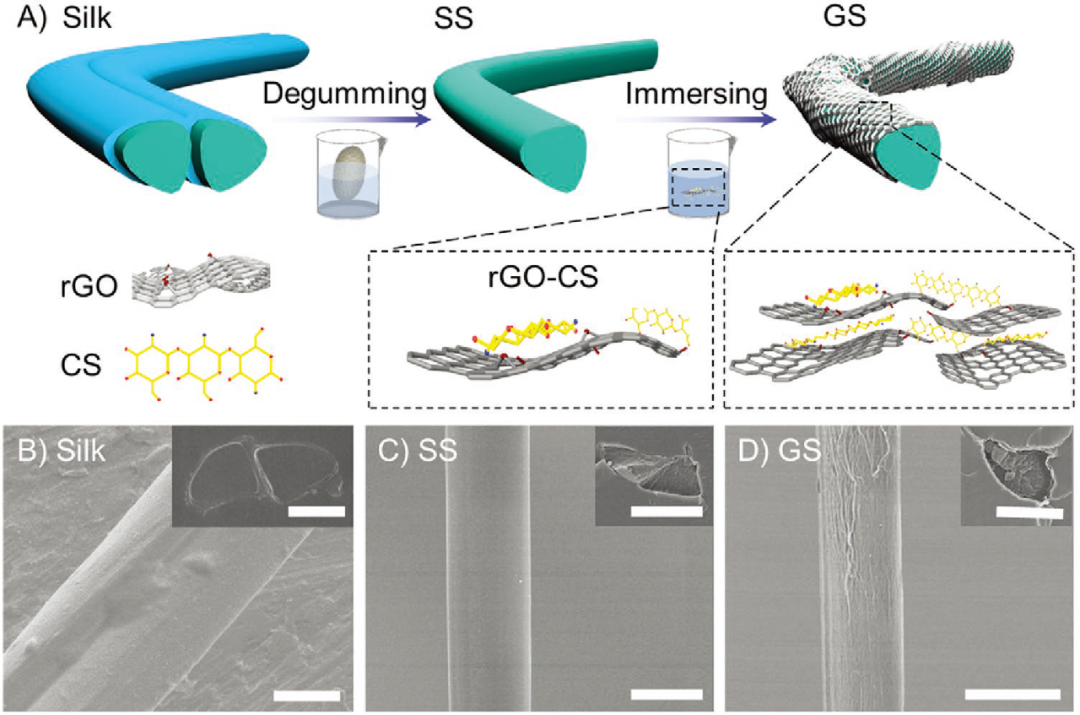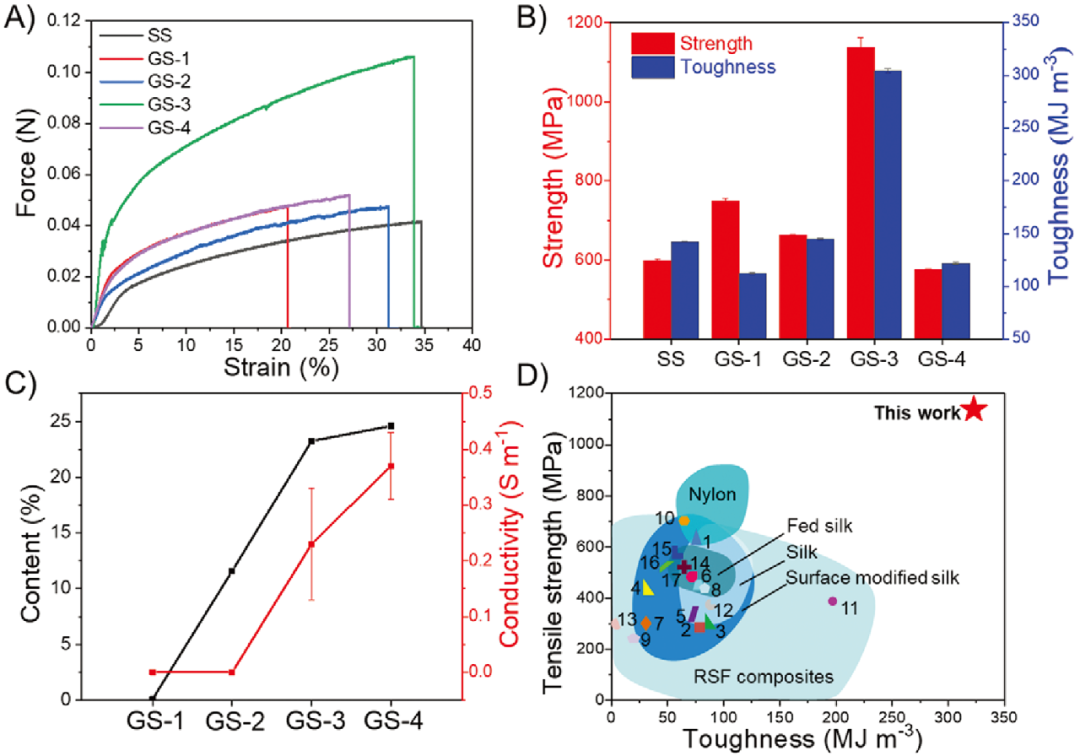Cheng Qunfeng AFM of Beijing University of Aeronautics and Astronautics: reduced graphene oxide functionalized silk fiber
QQ Academic Group: 1092348845
Detailed
Bombyx mori silk has great application potential in textile industry because of its green, renewable and easy degradation characteristics. However, natural silk lacks the key properties of smart fabrics, such as conductivity and stability, which limits its application in the growing market of wearable smart devices; In addition, compared with industrial fibers such as aramid and carbon fiber, the strength of natural silk is still insufficient for practical application. In order to endow silk with better functions, researchers have developed a variety of methods to modify silk, such as regenerated silk protein composite, surface modification, feeding silkworm and so on. However, these modification methods often destroy the original structure of silk and damage its excellent properties. Therefore, it is still a great challenge to realize the functionalization of natural silk without damaging the excellent properties of the original natural silk, so as to improve the mechanical properties of natural fiber and introduce functional properties such as conductivity.
Recently, Professor Cheng Qunfeng of Beijing University of Aeronautics and Astronautics, inspired by the natural core sheath structure, proposed an interface enhancement strategy to prepare reduced graphene oxide functionalized silk (GS). GS has excellent tensile strength and toughness, reaching 1137.7 ± 85.3 MPa and 304.5 MPa respectively ± 9 mjm-3, higher than other modified silk fibers. In addition, RGO gives the fiber good electrical properties, such as electrical conductivity and excellent temperature and deformation response. This kind of functional silk has great application potential in intelligent textile, motion monitoring and other fields. This work shows the feasibility of interface reinforcement strategy in the functionalization of natural fibers, and provides a new strategy for the preparation of green strong and tough functional fiber materials.

Fig. 1. A) the preparation process of GS. B – d) electron microscopic images of silk, silk monofilament and GS (cross section electron microscopic image in the illustration), scale: 10 μ M.

Fig. 2. A) force strain curves of monofilament and GS; B) The tensile strength and toughness of silk monofilament and GS; C) The content of reduced graphene oxide functional layer is related to the conductivity of GS; D) The tensile strength and toughness of GS compared with other modified silk.

Fig. 3. A) tensile fracture process of GS; B) The cross section morphology of GS; C) The infrared spectra of monofilament, GS, RGO CS and go were analyzed.

Fig. 4. A) response of GS resistance to temperature change; B) The stability of GS conductivity under tension and bending cycles was studied; C) The change of GS resistance under tensile cycle; D) The change of GS resistance under bending cycle.
The research is supported by the National Natural Science Foundation of China, the National Natural Science Foundation of China, the Newton senior scholar foundation of China, the outstanding youth science foundation of Beijing Natural Science Foundation of China, the 111 talent introduction program, and the biomedical engineering center.
This information is from the Internet for academic exchange only. If there is any infringement, please contact us to delete it immediately
- Previous: CEJ effectively organi
- Next: A Rising 2D Star: Nove


 Academic Frontier
Academic Frontier
